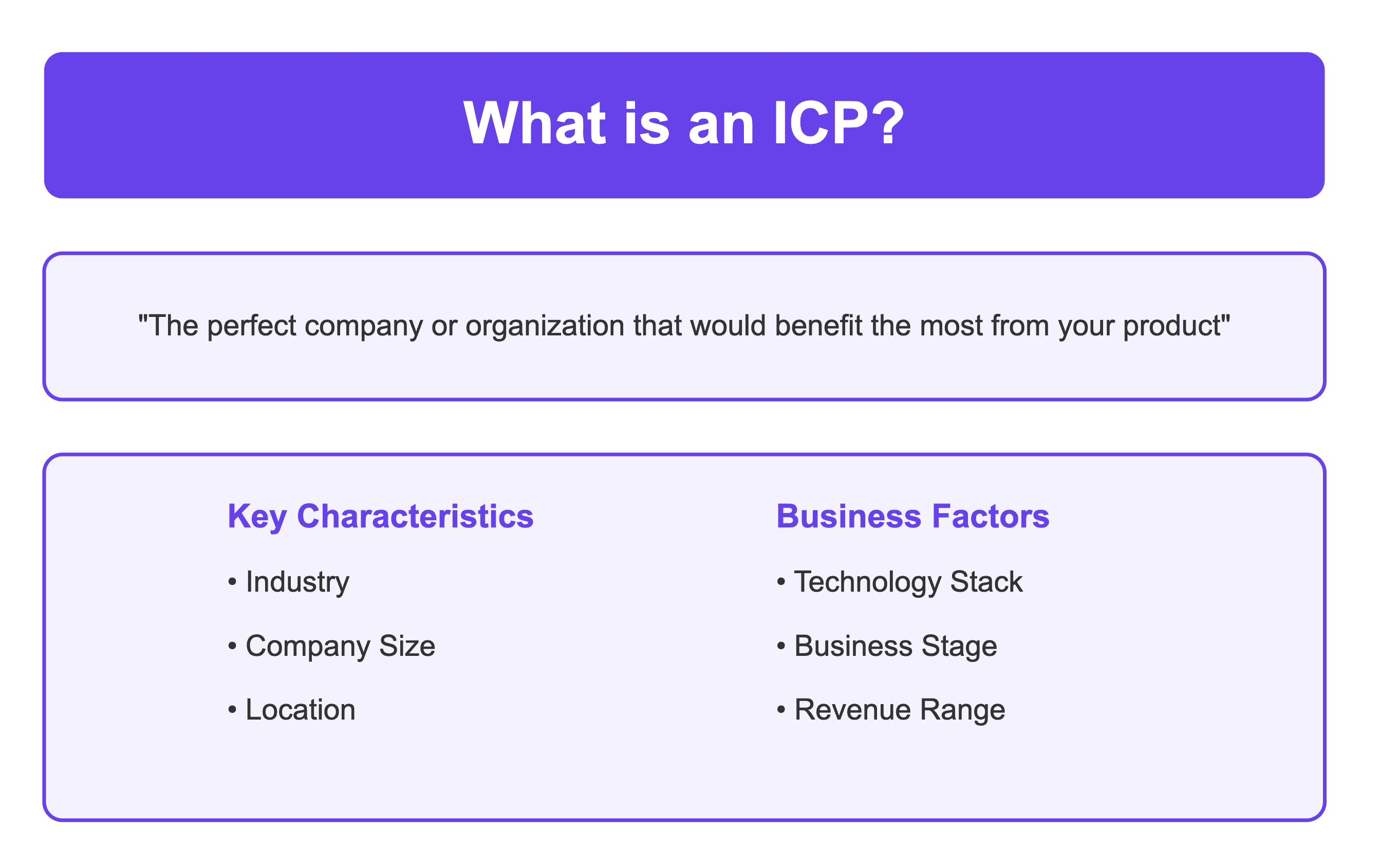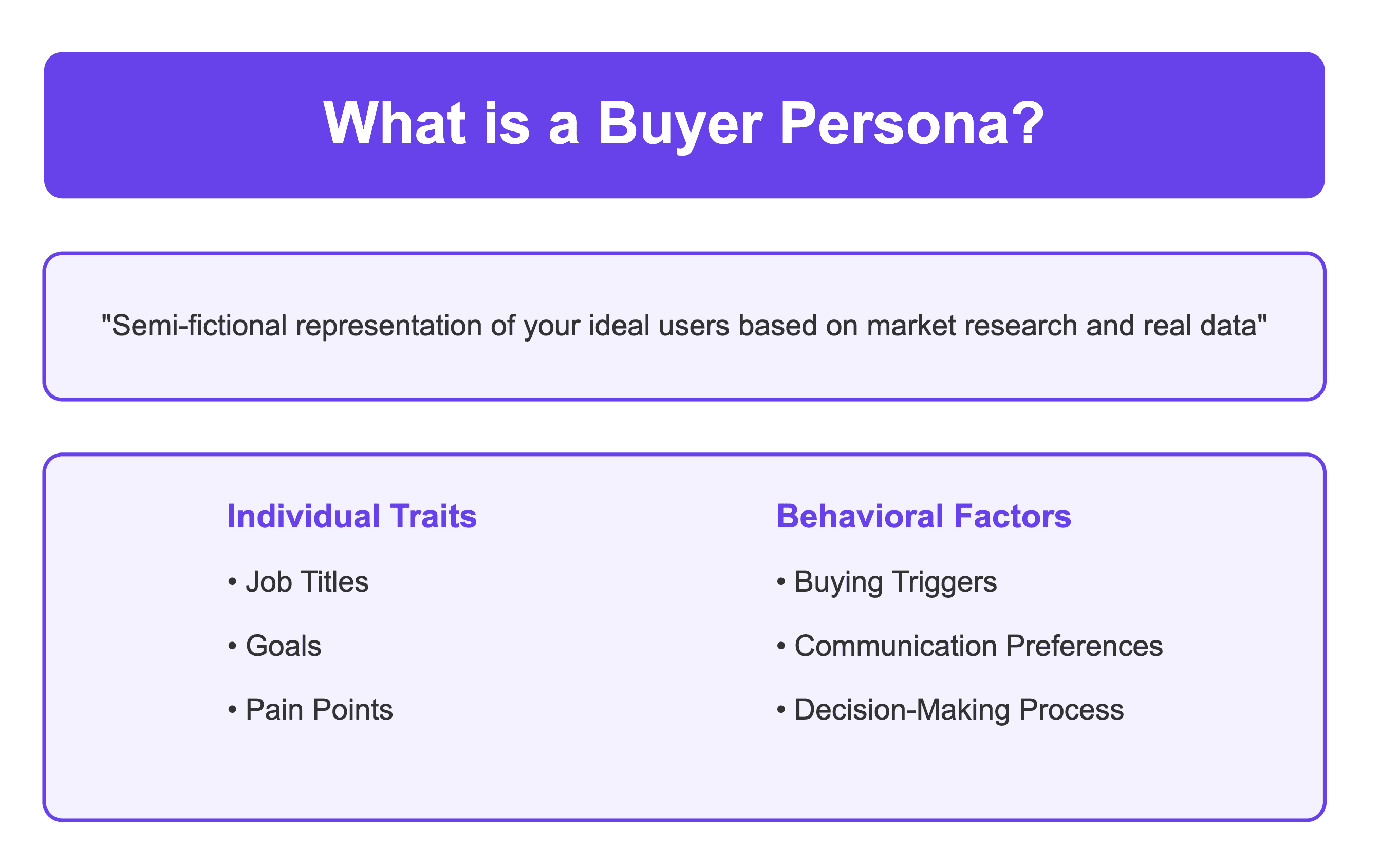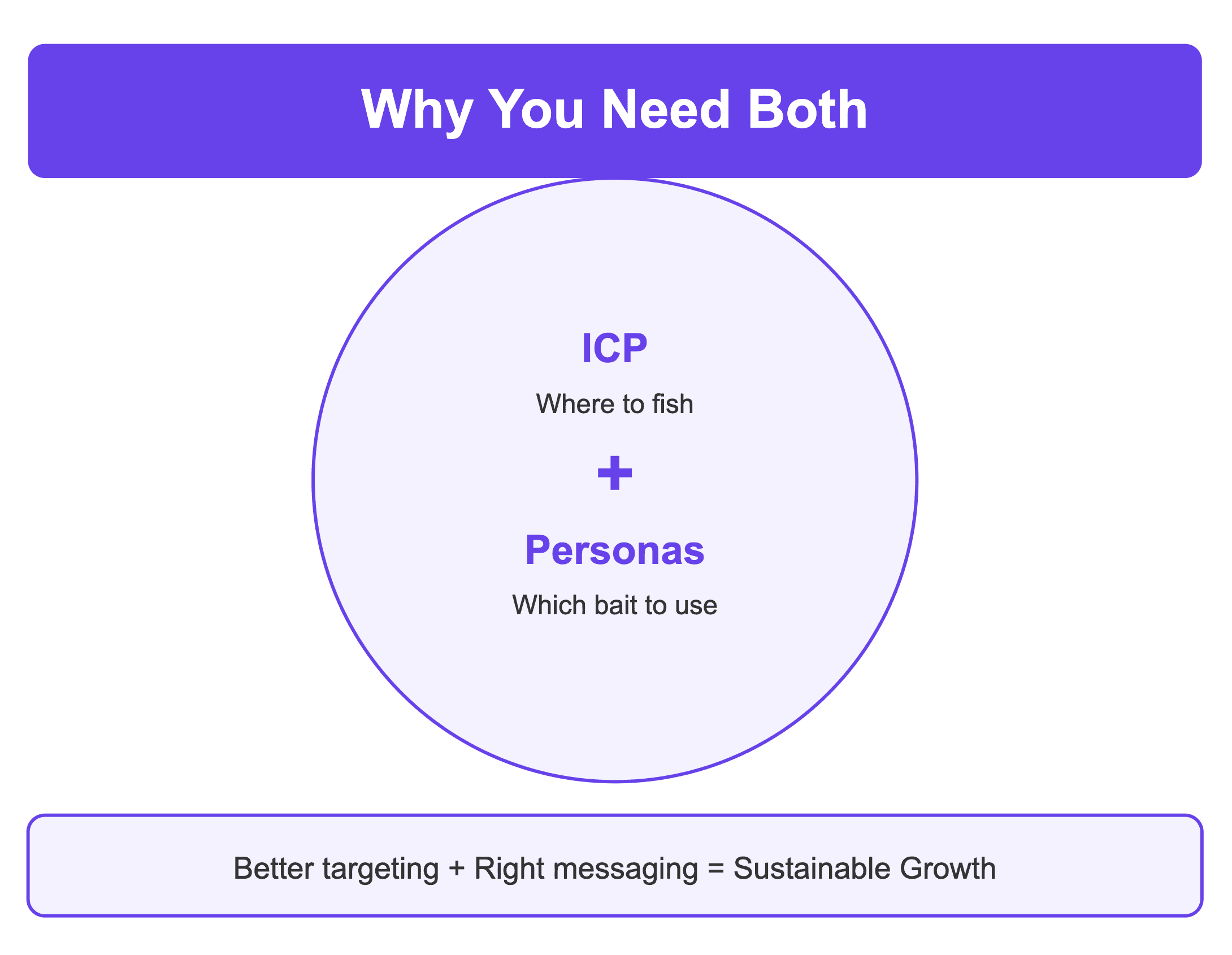
ICP and Buyer Personas in SaaS? Here’s Why You Need Both

by
Wiktoria Slowikowska
Oct 23, 2024
Identify and convert your most valuable users
Sign Up
One of the most debated questions in product and marketing meetings is, "Are we targeting the right customers?" It's a critical question, but the answer isn’t always simple. Businesses often turn to tools like the Ideal Customer Profile (ICP) and Buyer Personas to guide their strategies—but what exactly differentiates the two? And why do you need both to succeed?

If you're looking to grow your SaaS business, you need a rock-solid understanding of who you're building for and who’s most likely to buy from you. But here's the catch: many teams conflate ICP and buyer personas, or worse, think they’re the same thing. Let me show you how each of these concepts plays a distinct role in your go-to-market strategy, and why mastering both can give you a major competitive advantage.
The Hook: Why Getting It Right Matters
Imagine you’ve just spent months refining your SaaS product, and you're finally launching a new feature. The marketing team crafts campaigns targeting “tech-savvy users” or “decision-makers in SMBs.” You think you’ve nailed it, but after the launch... crickets. Conversion rates are disappointing, and churn is higher than expected. What went wrong?
Chances are, you either targeted the wrong companies or misunderstood the motivations of the actual buyers within those companies. That’s why having a clear ICP and buyer personas is crucial to not only reach the right people but also understand their needs, goals, and pain points.
So, let's break down what differentiates ICPs and buyer personas—and how to use them effectively.
What is an Ideal Customer Profile (ICP)?

Your Ideal Customer Profile (ICP) defines the perfect company or organization that would benefit the most from your SaaS product. It’s not about individuals (we’ll get to that later). The ICP focuses on companies as a whole—what they look like, how they operate, and why they’re the best fit for your solution.
An ICP is usually built around firmographic data such as:
Industry: Which industries need your product the most?
Company Size: What’s the revenue range or employee count?
Location: Are you targeting a specific geography?
Technology Stack: Does your product integrate well with certain tools or platforms?
Business Stage: Are you after startups, mid-market companies, or enterprises?
In short, your ICP is like the blueprint for identifying companies that will not only benefit from your SaaS product but also be the most valuable in terms of long-term growth and retention.
Example: SaaS for Project Management
If you offer a project management tool, your ICP might be small to medium-sized tech companies, between 50–200 employees, using tools like Jira or Slack, located in North America, and operating in agile development environments.
What is a Buyer Persona?

While your ICP focuses on companies, buyer personas zoom in on the individuals within those companies who are making the buying decisions or using your product day-to-day. Personas are semi-fictional representations of your ideal users, based on market research and data from your existing customers.
Buyer personas dig into:
Job Titles: Who’s the decision-maker? The influencer? The end user?
Goals: What are their objectives? What problems are they trying to solve?
Pain Points: What keeps them up at night? What’s stopping them from achieving their goals?
Buying Triggers: What events push them toward a purchase decision (e.g., budget season, new projects, growth pains)?
Communication Preferences: Do they prefer in-depth reports, quick demos, or a personal email from a sales rep?
Example: Buyer Personas for the Same Project Management Tool
You might have several buyer personas, including:
"Sarah, the CTO": A decision-maker looking for scalable solutions to improve team productivity.
"David, the Project Manager": A power user who needs detailed reporting and task automation.
"Amy, the Frontline Developer": A daily user looking for seamless integrations and an easy-to-use interface.
Whereas ICP tells you which companies to target, buyer personas tell you who within those companies to target and how to engage them effectively.
The Key Differences Between ICP and Buyer Personas
Now that you have a basic understanding of each, let’s dig into the core differences:
Focus
ICP: Focuses on defining the characteristics of the perfect company for your product.
Buyer Persona: Focuses on the individuals within that company who will make the buying decisions or use the product.
Scope
ICP: Broad and company-level, outlining high-level attributes like industry, company size, and revenue.
Buyer Persona: Narrower, zooming in on personal motivations, job roles, and specific pain points of individual stakeholders.
Use Case
ICP: Helps identify target markets, shape your go-to-market strategy, and direct outbound sales efforts.
Buyer Persona: Helps tailor messaging, sales pitches, content marketing, and user experience to appeal to the actual humans making the decisions or using your product.
Data Sources
ICP: Built using firmographic data, historical success patterns, and external market research.
Buyer Persona: Created from interviews, user feedback, behavioral data, and interactions with your sales and customer success teams.
Why You Need Both ICP and Buyer Personas in SaaS

You might be thinking, "If I have a solid ICP, why do I need buyer personas?" The answer is simple: one without the other leads to missed opportunities.
Without ICP, Buyer Personas Fall Flat: You might know everything about Sarah the CTO, but if you’re targeting the wrong companies, your efforts will be wasted. A great buyer persona means nothing if you’re pitching to companies that aren’t a good fit for your product.
Without Buyer Personas, ICP Isn’t Enough: You can identify the perfect company, but if you don't know who in that company makes the buying decisions or what their specific needs are, you’ll struggle to close deals and reduce churn.
In SaaS, the ICP helps you define where to fish, while buyer personas help you decide which bait to use. Both are critical for acquiring the right customers and driving long-term growth.
How to Build Both for SaaS Success
Step 1: Create Your ICP
Start by analyzing your best customers. Look at the companies with the highest retention rates, lowest churn, and most significant lifetime value (LTV). Identify common characteristics and build your ICP around those traits.
Ask questions like:
What industry are they in?
What size are they?
What problem are they solving with your product?
What common tech stack do they use?
Step 2: Develop Detailed Buyer Personas
Once you know which companies you’re targeting, dig deeper into the people inside those organizations. Use interviews, feedback, and customer data to flesh out your buyer personas. Remember, you’ll likely have several personas depending on the roles and departments of your users.
Step 3: Tailor Your Product Experience and Messaging
With your ICP and personas in place, ensure your product onboarding, in-app messaging, and customer communication are personalized for each user type. For example, create tutorials and feature highlights that speak directly to the different personas, showing them value right from the start.
Step 4: Continually Iterate
Both ICPs and buyer personas should evolve as your market and customer base grow. Regularly update them with insights from user behavior, product analytics, and feedback. This ensures you're always aligning your product experience to the most relevant users and organizations.
Conclusion: Two Sides of the Same Coin
The real magic happens when you use your ICP and buyer personas together. Your ICP guides you to the right companies; your buyer personas help you win the right people within those companies. Both are essential for scaling your SaaS product and driving sustainable growth.




